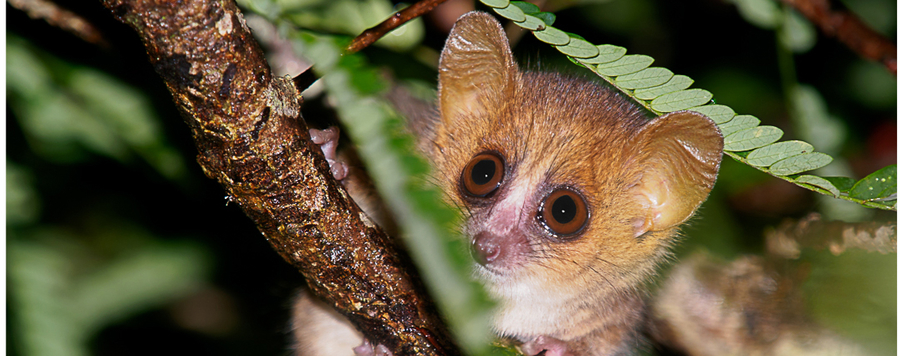
Microcebus berthae in Central Western Madagascar
The distribution of most recently discovered or described lemur species remains poorly known, but many appear to have small geographical ranges, making them vulnerable to extinction. Research can contribute to future conservation actions on behalf of these species by providing accurate information on local distribution and abundance. The distribution of the world’s smallest primate, the endangered Madame Berthe’s mouse lemur (Microcebus berthae), is limited to the Menabe Central region of western Madagascar. This species was discovered in the 1990s, but many fundamental aspects of its ecology remain unknown. The aims of our study were therefore to determine the actual distribution of Microcebus berthae across the forests of this region, to estimate population density, and to examine the species’ response to anthropogenic activities. We established 35 1-km line transects across Menabe Central, on which we surveyed mouse lemurs by distance sampling and live trapping.
Microcebus berthae does not occur in all remaining forests of this small region and its population density is highly heterogeneous, both across its geographic range and locally. Within its area of occupancy, the population of Microcebus berthae not only was distributed according to spatial heterogeneities of the habitat, but also responded to anthropogenic disturbances and varied seasonally. Our results indicate that Microcebus berthae is susceptible to habitat degradation and avoids human environments spatially. As none of the forest remnants in which the species still occurs were officially protected until recently, immediate conservation actions should focus on effectively protecting Kirindy and Ambadira forests.






